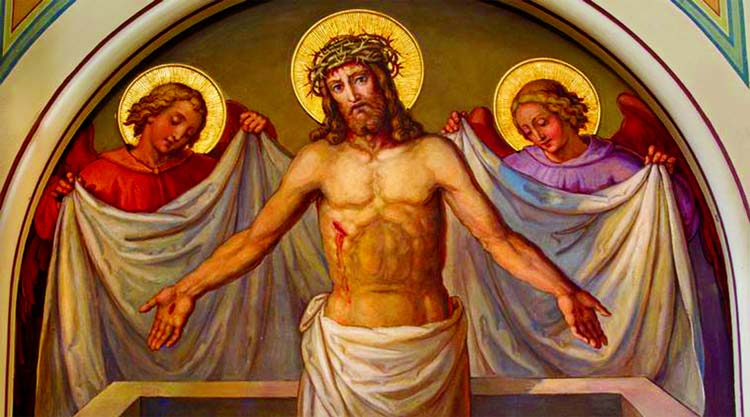
Weekend Plus Desk :
While many festivals like Christmas, Halloween and Thanksgiving are celebrated on specific dates, when it comes to Easter and Good Friday, there are no stipulated dates.
Every year, Christians around the world observe the Holy Week usually around March or April in the Georgian calendar, however, sometimes important dates might shift to May. Wondering how the holy date of Easter is determined every year? Find out here!
Unlike the birth of Jesus Christ which is widely celebrated on December 25 every year, also known as Christmas, the resurrection of Christ has so specific date.
In fact, even in the Bible, there is no mention of the date Christ was resurrected. As a result, it was being observed on different days in different parts of the world.
To avoid the confusion, centuries ago in 325, it was determined by the Council of Nicea that all Christians needed to observe Easter on the same day. They announced that Easter Day would always be observed on a Sunday, after the full moon that follows the vernal or spring equinox. As the vernal equinox occurs on March 20, when the Sun crosses the equator going north – Easter can fall anytime between March 21 to April 25.
However, there is a small catch. According to the Bible, Christ was crucified and resurrected around the Jewish Passover (which is traditionally held on first full moon following the vernal equinox). However, as the full moon can vary in each time zone, the Church determined that they would use the 14th day of the lunar month instead – the Paschal Full Moon or the ecclesiastical moon to determine Easter.
As it is known that Passover falls on the date of the paschal full moon in the Jewish calendar, and the Last Supper (Holy Thursday) occurred on the Passover. Therefore, the day on which Christ rose from the dead-was the Sunday after Passover.
In several parts of the world where Christians use the Julian calendar as used by some eastern or Orthodox churches, instead of the Gregorian calendar, the date may vary. It’s important to note that the Orthodox churches use the exact same formula for determining the date of Easter, however, as months in Julian calendar are longer, the vernal equinox is usually on April 3, hence pushing the Easter date further.
While many festivals like Christmas, Halloween and Thanksgiving are celebrated on specific dates, when it comes to Easter and Good Friday, there are no stipulated dates.
Every year, Christians around the world observe the Holy Week usually around March or April in the Georgian calendar, however, sometimes important dates might shift to May. Wondering how the holy date of Easter is determined every year? Find out here!
Unlike the birth of Jesus Christ which is widely celebrated on December 25 every year, also known as Christmas, the resurrection of Christ has so specific date.
In fact, even in the Bible, there is no mention of the date Christ was resurrected. As a result, it was being observed on different days in different parts of the world.
To avoid the confusion, centuries ago in 325, it was determined by the Council of Nicea that all Christians needed to observe Easter on the same day. They announced that Easter Day would always be observed on a Sunday, after the full moon that follows the vernal or spring equinox. As the vernal equinox occurs on March 20, when the Sun crosses the equator going north – Easter can fall anytime between March 21 to April 25.
However, there is a small catch. According to the Bible, Christ was crucified and resurrected around the Jewish Passover (which is traditionally held on first full moon following the vernal equinox). However, as the full moon can vary in each time zone, the Church determined that they would use the 14th day of the lunar month instead – the Paschal Full Moon or the ecclesiastical moon to determine Easter.
As it is known that Passover falls on the date of the paschal full moon in the Jewish calendar, and the Last Supper (Holy Thursday) occurred on the Passover. Therefore, the day on which Christ rose from the dead-was the Sunday after Passover.
In several parts of the world where Christians use the Julian calendar as used by some eastern or Orthodox churches, instead of the Gregorian calendar, the date may vary. It’s important to note that the Orthodox churches use the exact same formula for determining the date of Easter, however, as months in Julian calendar are longer, the vernal equinox is usually on April 3, hence pushing the Easter date further.

